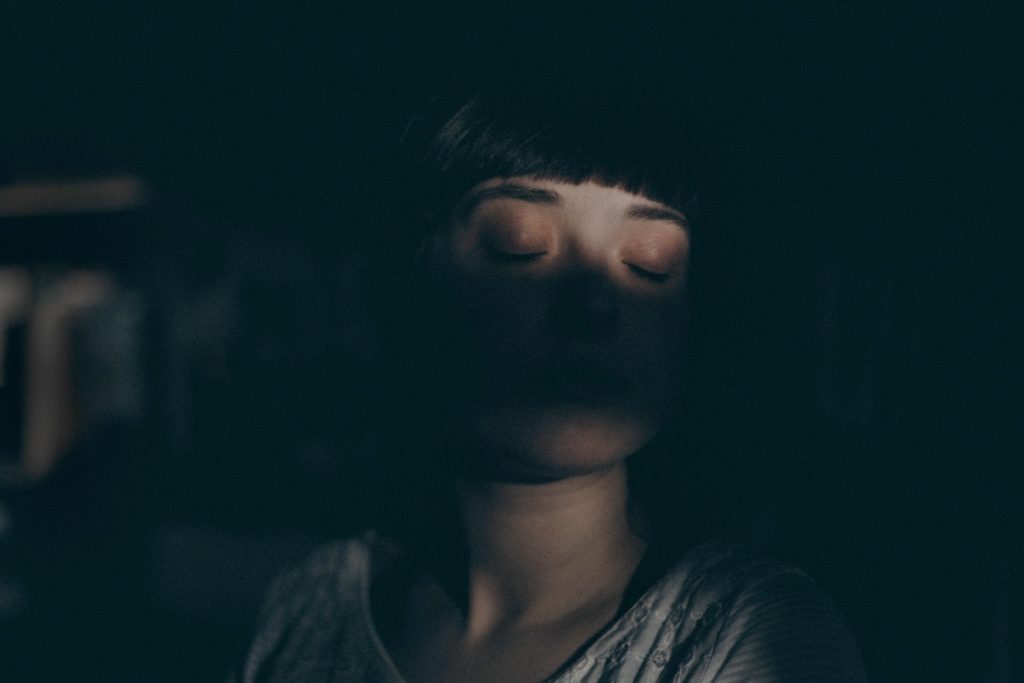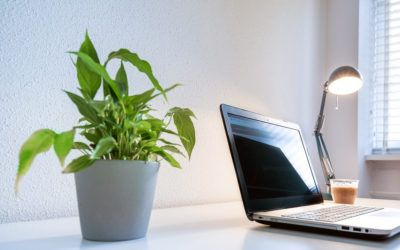Good, quality sleep is a foundational piece of life- from physical to mental health. Unfortunately, 1 in 3 Americans don’t get enough sleep- and that doesn’t even take into account the quality of that sleep. These numbers aren’t exactly improving either, in part thanks to our increased exposure to stimulating blue light via electronic devices, like our phones and computers. This sort of blue light exposure sparks the production of a wakeful stress hormone called cortisol, and makes it harder for us to wind down- sparking insomnia and lower quality sleep in general. The compounding effects of poor sleep habits are well known- from heart trouble to increased risk of dementia.
People who live further from the equator experience an added challenge- that of significant seasonal daylight changes. Longer summer days and shorter winter ones can throw your sleep habits into even further disarray. The good news is that you can set yourself up for sleep success during the summer months, and in such a way that those habits will carry over into the winter months as well. We’re going to break that routine down for you- and give you some more information on modern and seasonal challenges to maintaining a healthy sleep schedule, and how to mitigate them… with the help of a sleep lamp!
What Disrupts Our Sleep and Why: The Influence of Blue Light Exposure
Let’s revisit some of the stressors and challenges to maintaining a healthy sleep schedule. We mentioned blue light before, but it’s worth doing a bit of a dive into why that sort of light is so disruptive to sleep.
Humans are animals, and like all vertebrates, we have a 24-hour body clock- called our circadian rhythm– that affects not only our sleep patterns, but our metabolism, energy levels, and other significant body processes (like hormone production). This rhythm is governed in large part by light exposure- people who are cut off from light exposure will eventually display dysregulated circadian rhythms, and similarly dysregulated sleep patterns.
The light the sun emits is what we call “blue” light (since it falls on the blue part of the visible light spectrum). It is also known as HEV (High Energy Visible) light. We are genetically primed to respond to this light with wakefulness- it sparks the production of hormones like cortisol, which increases alertness, and depresses the production of hormones like melatonin, which decreases alertness and prepares our bodies for sleep.
Humans developed their circadian rhythm and internal body clock long ago, before the advent of artificial light- which primarily emits blue light. Today, we have far more exposure to blue light than we are evolutionarily designed to tolerate- as much as 13 hours of blue light exposure every day from electronic devices alone. So, one can imagine the impact of even longer days on that sort of exposure.
The Impact of the Summer Season on Sleep

Artificial blue light exposure isn’t the only challenge to healthy sleep habits, either. Seasonal changes can affect our sleep as well- further increasing natural blue light exposure in the summer and decreasing full spectrum exposure during the winter (decreasing our productivity and even contributing to seasonal depression disorders, like SAD).
In the summer, we are confronted with longer days- the further north you are, the longer they stretch. We tend to be more socially engaged during the summer, and more active, too- staying out later with friends, eating later in the day, and catching every ray we can… and delaying the release of melatonin.
Summer poses other challenges, too- higher temperatures make sleep harder to attain (most humans fall asleep fastest and sleep best in temperatures at about 70 Fahrenheit and below), and busy social schedules can contribute to increased stress- all of which pose challenges to a healthy sleep routine.
While summer life may feel great in the moment, it can contribute to a rough awakening (no pun intended) when winter, and its shorter days, come back around. Suddenly, you’re finding it much harder to prepare for sleep, as you’re still stuck on your late summer schedule. This is even worse if you’ve let those above-mentioned influences negatively impact your sleep schedule.
Health Consequences of a Poor Summer Sleep Routine
Staying out late in the summer may maximize your waking fun, but the health consequences of a poor summer sleep routine can be profound. Higher cortisol levels can result in increased stress and negative moods and contribute to slower recovery times from both physical injury and exhaustion.
A dysregulated sleep schedule also contributes to dysregulated moods. We call Seasonal Affective Disorder just that because for some people, it strikes in summer as opposed to winter. In both cases, it’s theorized that a disrupted circadian rhythm is a primary factor in the development of this condition, which can be typified by, at times, serious depression.
Health Consequences of a Good Summer Sleep Routine- Throughout the Year
Practicing good sleep hygiene during the summer means making sure you get plenty of exposure to blue light early in the day- and limiting your activities and exposure once the sun goes down (as tempting as it may be to stay outside and party). You can throw in some added tricks, too- camping has been found to help with the regulation of our circadian rhythms, as it puts us much more in touch with natural levels of light exposure.
A good sleep routine in the summer helps prime you for a good routine in the winter, when we are even more beholden to artificial blue light exposure. It helps us keep our hormonal rhythms in check- making sure we receive neither too much nor too little cortisol. The downstream effects of this sort of rhythmic harmony are considerable- they include improved mood, energy levels, cardiovascular health, recovery times, and improved sleep quality.
When winter comes around, a healthy summer sleep routine will have made it easier for you to transfer into a healthy winter one- especially if you accustom yourself to the use of lighting aids, which we’ll discuss in detail below.
Using a Sleep Light During the Summer to Improve Your Sleep Hygiene
So, what does a good sleep routine look like during the summer? We’ve already discussed not staying up too late and cutting your exposure to artificial blue light. Other important aspects include:
- Going to bed and waking up at the same time every day
- Ensuring you receive lots of natural blue light early in the day
- Eating at the same times every day, and limiting your food intake after dark
While these are all fairly common sense, there is even more you can do to make it improve your sleep hygiene and quality of rest. One of the easiest ways to ‘hack’ your sleep routine is by using a sleep light.

It isn’t always possible to eschew artificial lighting, even in the summer. But increasingly, there are artificial lighting solutions that take into account the importance of human-centric lighting. One of these solutions is referred to as a “sleep light”.
Sleep lights are lights- usually lamps, but sometimes simply lightbulbs- that provide different wavelengths of light at different times of day. While some may be used for waking up- i.e., emitting blue light when it’s time for you to wake- think an alarm clock that uses light- others are used to provide warm, red spectrum nighttime light, which allows you to see, but doesn’t stimulate cortisol production or dampen the creation of melatonin. This allows your body to hew to its natural rhythm without significant disruption.
While many lights are either a waking light or a sleep light, some have the ability to cycle between different wavelengths (like the BIOS SkyBlue BR30 LED, A21, or the SkyView Wellness table lamp), allowing you the freedom of a one-stop lighting solution.
If you choose to use a sleep light, you’ll want to make sure you are using it regularly, and that it is appropriately scheduled for your location and whichever season you are in. The SkyView Wellness lamp, for example, relies on an app that you can program to your liking (though we always recommend trying to stick close to the natural rhythm of the world around you).
Using your sleep light in summer will habituate you to using artificial lighting to help regulate your circadian rhythm- and will make it that much easier to use in the winter, when sleep hygiene can be even harder to enforce, owing to the lack of natural blue light access most experience.
Setting Up Your Routine with a Sleep Light
The greatest challenge to setting up a healthy sleep routine is yourself! Developing new habits is hard. Luckily, we have plenty of tools- like sleep lamps- to help us. Creating a sleep routine plan in summer, with clearly defined goals and parameters, will help you set yourself up for better health throughout the year- and it will make the tough transition to a winter routine significantly easier. We certainly think it’s worth the improved health, mood, and productivity.


